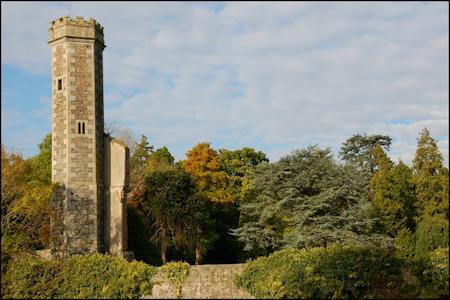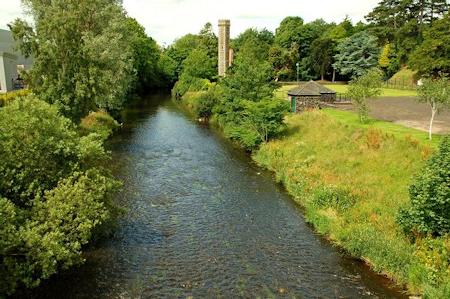
Antrim Castle & Gardens
Situated in the pretty conservation area of Antrim town, Antrim Castle occupied an imposing setting beside Six-Mile Water River near Lough Neath.
The first castle on the present site was completed in 1613 near the site of an earlier Norman structure; the remains of its motte can still be seen in the gardens today. In 1662 Sir John Clotworthy, 1st Viscount Massereene completed his rebuild of the castle and it is the remnants of his structure that can be seen today. The magnificent formal gardens that surrounded the castle were probably put in place at around the same time.
In the late 17th Century formal gardens were in fashion and like many of its contemporaries Antrim Castle had a parterre (a formal garden) to delight its guests and supply the castle with herbs for both cooking and medicine.
Conflicts and Turmoil
The Skeffingtons came to own the castle by marriage. The family continued to gain power with Sir John Skeffington, 2nd Viscount Massereene, (Sir John's son-in law) gaining various lands and Baronies in Ulster under the Acts of Settlement and Explanation.
At the outbreak of the Williamite War in Ireland in 1688 Lord Massereene turned against King John in favour of King William of Orange. He assembled the gentry of Antrim at Antrim Castle and formed the “Antrim Association”. His son, Clotworthy Skeffington, raised a regiment of foot soldiers and became one of the Commanders-in-Chief of the Antrim forces.
After the Break of Dromore in March 1689, the Skeffingtons were forced to abandon Antrim Castle and it was garrisoned by Jacobite troops under General Richard Hamilton. They looted the castle and took over £3000 worth of silver plate and furnishings.
After King William's victory the castle and its estates were handed back to the Skeffingtons. Thereafter the castle remained in the possession of Viscount Massereene and his descendants.
In 1798 the castle was the scene of a small skirmish between the royal garrison and the United Irishmen under Henry Joy M’Cracken. Although the United Irishmen had a six-pounder cannon, they were under-armed and the castle was in no real danger.
Destruction by Fire
Antrim castle was the seat for the Massereene family and was also used for social occasions and political conferences. In 1922 the castle was destroyed by a fire. The castle remained in ruins until 1970 when it was demolished. The gatehouse and a free standing Italian-style tower are all that remain of the castle.
In the last couple of years the famous 17th Century gardens which were built along with the castle have been the focus of a multi-million pound restoration project. Clotworthy House, which was originally the castle’s stable block, has been transformed into a centre for garden heritage, culture and the arts.
The outline of Antrim Castle has been incorporated into a modern garden feature and many of the original Anglo-Dutch water features of the garden have been restored. The water gardens are one of the earliest of their kind in the British Isles and its features include a grand canal, a reconstruction of the parterre garden and ponds and paths.
The remaining buildings have been put to good use with a new state-of-the-art gallery housed in the former Long Barn and a range of exhibitions. There is also a gift shop, coffee shop and extensive disabled access to the site.
Status: Ruin / Visitor Attraction / Cultural Centre
Owner: Antrim Borough Council
Tel: +44 (0)28 9448 1338
Email: culture@antrim.gov.uk
Website: www.antrim.gov.uk
Opening Times: Daily except 1st Jan, 12th Jul, 24th & 25 Dec and Dec 31st. Mon, Wed & Fri 9.30am to 5.30pm, Tue & Thu 9.30am to 9.30pm, Sat & Sun 10am to 5pm


The Italianate Tower at Antrim Castle

Sixmilewater and the castle ruins